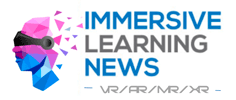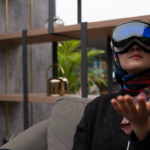At Lucid Reality Labs, we see a growing interest among our clients and target audiences in integrating smart glasses technology into their businesses. To better understand this trend, we decided to explore the evolving landscape of smart glasses and XR technologies. Through a series of polls and industry research, we asked tech professionals about the biggest challenges, must-have features, and key success metrics for AR glasses in the workplace. Here’s what stood out: system compatibility and workforce productivity are top priorities. Businesses want tools that fit seamlessly into their workflows and make a real difference. With these insights and emerging trends, let’s explore how smart glasses are shaping the future of XR and creating new opportunities for innovation.
After collecting 119 votes from the technology specialists in our audience, including founders, business C-level management, decision-makers, technology experts, and developers, we defined a list of the following insights.
Hurdles for AR Glasses Integration into Enterprise Workflows
Our first poll aimed to reveal barriers to adopting AR glasses in enterprise settings. The most crucial challenge, identified by 40% of respondents, is the lack of compatible apps. Enterprises require a robust ecosystem of AR-ready applications tailored to diverse industry needs. Without this, integration becomes inelegant, limiting the potential of AR glasses to streamline workflows and enhance operations. This underscores developers‘ and hardware manufacturers‘ critical role in prioritizing app development and fostering broader compatibility so that many industries ready to adopt this innovation could benefit!
Other challenges were also noteworthy. Implementation cost, highlighted by 31% of respondents, emphasizes the need for cost-effective solutions that cater to enterprises of all sizes. The financial considerations can sometimes make businesses hesitant to explore AR glasses, even with their promising benefits. Meanwhile, data privacy and security concerns were flagged by 20%, mainly by industries handling sensitive information, such as healthcare and finance. Addressing these concerns will be essential for fostering broader adoption. Lastly, the steep learning curve was noted by 9% of respondents, signaling that while training and usability improvements are relevant, they are not as immediate a need to address as the ecosystem and ROI.
Most Critical Features of AR Glasses for Enterprise Use
Our second poll focused on identifying the most essential features of AR glasses for enterprise applications. Easy system compatibility emerged as the top priority, selected by 33% of respondents. This highlights enterprises’ need for AR glasses that seamlessly integrate with existing systems and workflows, enabling teams to adopt the technology without disrupting operations or incurring additional complexity.
Other critical features included Field of View (FoV), the visible area a user can see through the glasses display, and determining how much digital content or augmented reality overlays can be viewed simultaneously. 28% of respondents emphasized that FoV demonstrates the importance of wide, immersive visuals. For industries such as manufacturing, healthcare, and logistics, spatial awareness is key, making FoV a vital factor. Smart, real-time AI features were noted by 25%, reflecting the growing importance of AI integration for tasks like real-time data analysis, contextual guidance, and decision-making. While battery life garnered 15% of votes, indicating it is a less critical factor overall, reliable power solutions remain essential for ensuring sustained use in enterprise settings.
Success Metrics for AR Glasses in Enterprise Workflows
In our third poll, we explored how enterprises will approach measuring AR glasses‘ success once implemented. Workforce productivity topped the list at 32%, underscoring the expectation that AR glasses should significantly enhance employee efficiency and effectiveness. This aligns with the broader goal of integrating AR glasses into workflows to drive performance and deliver measurable results.
Other metrics also provide valuable insights. Process optimization, selected by 24%, highlights the desire for streamlined workflows and more efficient operations facilitated by AR technologies. Similarly, improved outcomes received 24% of votes, indicating that enterprises value tangible results, such as better accuracy, faster execution, or enhanced customer satisfaction. Cost reduction, at 21%, reflects enterprises‘ focus on ROI, viewing AR glasses as a long-term investment that should justify their initial and operational costs.
A New Big Shift
Our findings revealed several themes defining the adoption of AR glasses in enterprise environments:
- Enterprise Value Takes Priority: Businesses prioritize tools that enhance workflows, reduce friction, and boost employee productivity.
- Customization and Compatibility: Enterprises consistently seek flexible solutions that adapt to existing systems and workflows, such as customizable SDKs.
- Balancing Cost and Quality: While affordability is essential, enterprises value functionality and ROI over simply reducing costs.
- AI as a Game-Changer: Real-time AI features, such as contextual prompts and automated analysis, are indispensable for enabling smarter decisions and adaptive solutions.
- Metrics Beyond Cost Reduction: Success is defined by productivity, process optimization, and outcomes that drive growth and innovation.
Embracing Smart Glasses
The fast-paced evolution of smart glasses is not just about technological breakthroughs—it’s about redefining how businesses interact with digital and physical environments. From Meta’s creator-first approach to Google’s scalable ecosystem, these advancements are shaping a future where XR is integral to daily workflows, customer engagement, and operational efficiency. The emergence of AI glasses with small displays and head-up displays allows businesses to experiment with lightweight, scalable XR solutions that enhance productivity, collaboration, and user engagement. Global shipments of VR and MR headsets are expected to reach approximately 9.6 million units in 2024, representing an 8.8% year-over-year increase. This growth underscores XR technologies will continue to gain new markets, and businesses that invest in XR will now be at the forefront of scalable innovations in their industries.
Quelle:
https://www.linkedin.com/pulse/what-enterprises-want-poll-driven-insights-smart-glasses-rc8ke/


